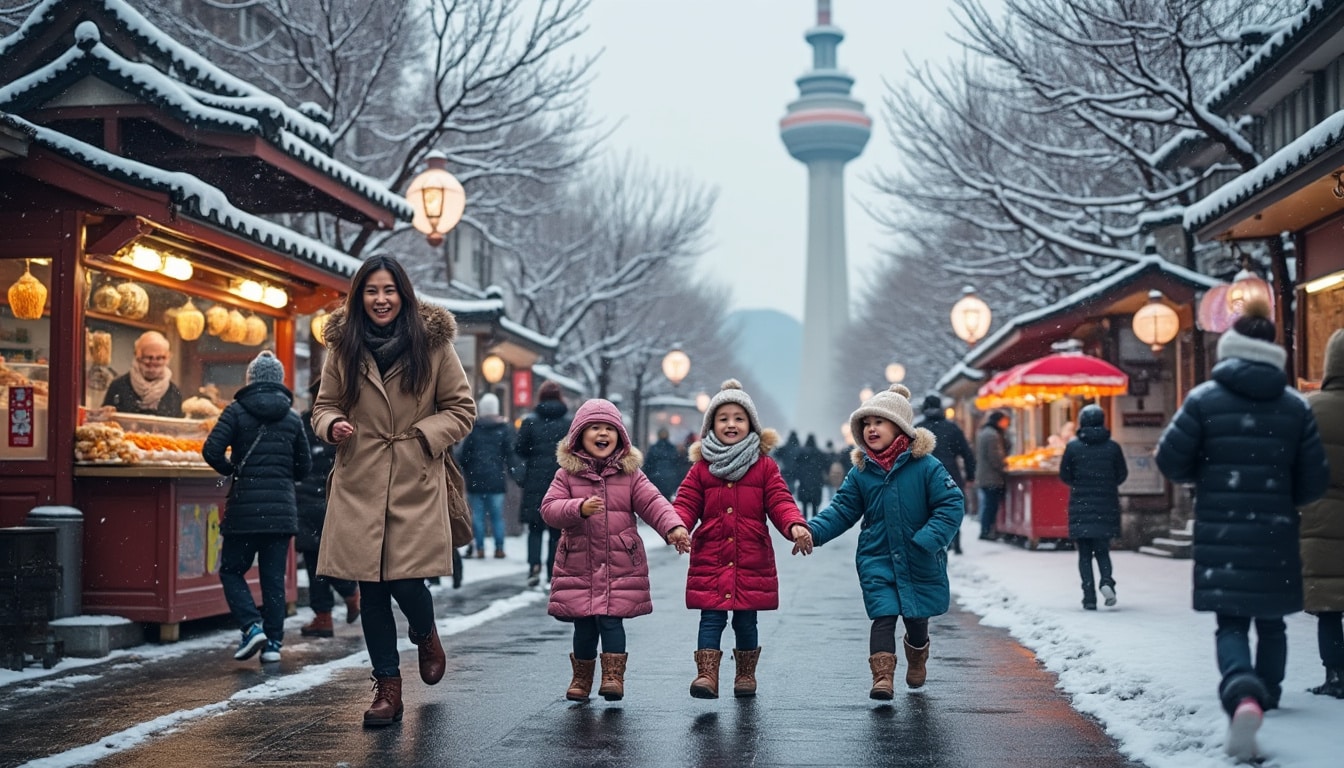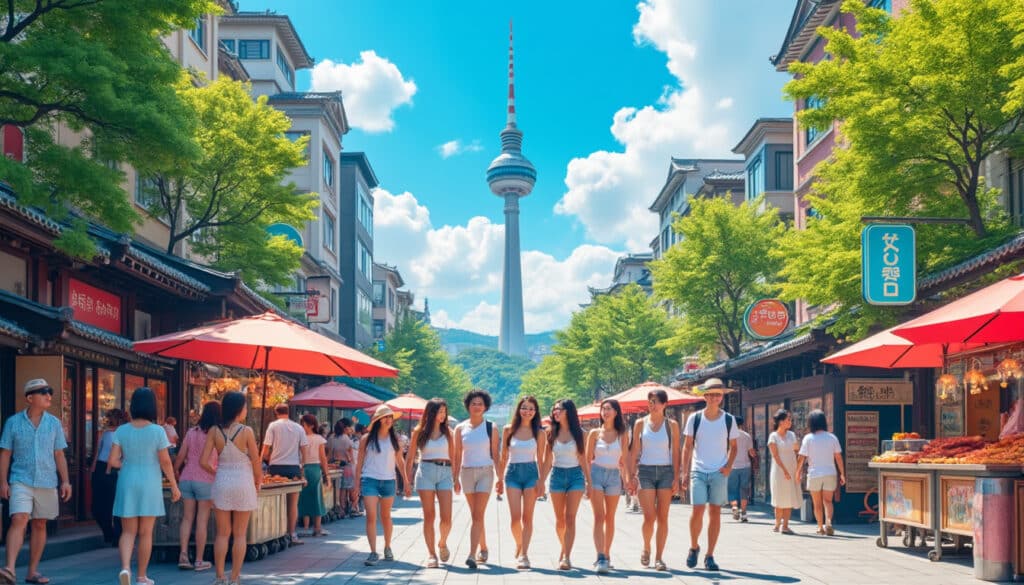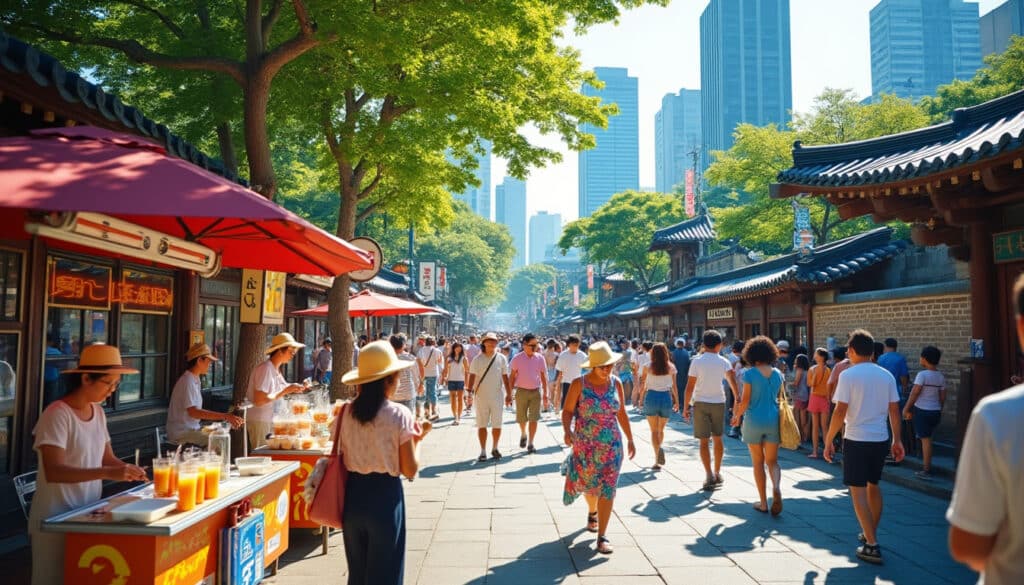Seoul, the bustling capital of South Korea, is renowned not just for its vibrant culture, rich history, and culinary delights, but also for its notoriously cold winters. 🌬️ As temperatures plummet to well below freezing, both residents and tourists must adapt to a season that challenges comfort and routine. Why does Seoul experience such extreme cold? How do the geographical location and other natural factors contribute to this distinctive climate? This exploration unveils the various elements that define Seoul’s winter, offering insights into cultural, environmental, and lifestyle adaptations that cope with and celebrate the season’s chill.
Seoul’s Geographical Influence on Cold Weather
Nestled in a unique geographical setting, Seoul’s cold winters are significantly influenced by its location. Situated in the northern hemisphere, the city is exposed to cold winds originating from Siberia, which sweep southward over the Korean Peninsula. These winds are not hindered by any major geographical barriers, allowing them to affect the city quite directly. As the capital of South Korea, located in the northwest of the country, Seoul proves to be a climatic battleground where frigid winter air masses come face to face with mountain ranges that fortify the city on all sides.
Seoul stands on an elevated plateau which plays a crucial role in its climatic conditions. At an altitude of 87 meters above sea level, the city feels the pinch of higher elevations, which are generally cooler due to reduced air pressure. When combined with the cold air masses sweeping down from Siberia, these conditions bring about an intense cold that can challenge even the most seasoned winter enthusiast. The surrounding mountains, while scenic, inadvertently serve as barriers that trap cold air in the urban basin, further contributing to the frosty conditions.
- 🔺 Mountains: Act as natural barriers, trapping cold air.
- 🎐 Siberian Winds: Main contributors to freezing temperatures.
- 🗺️ Altitude: Higher elevation correlates with lower temperatures.
Additionally, the Sea of Japan, known for its cold currents, also plays a pivotal role. Known as the Liman Current, its southward flow significantly influences the air temperature. Even as similar latitudes experience comparatively milder winters, Seoul’s proximity to this cold oceanic current ensures that it remains in the grip of harsh winter weather, setting the stage for temperatures that can plummet to breathtaking lows.
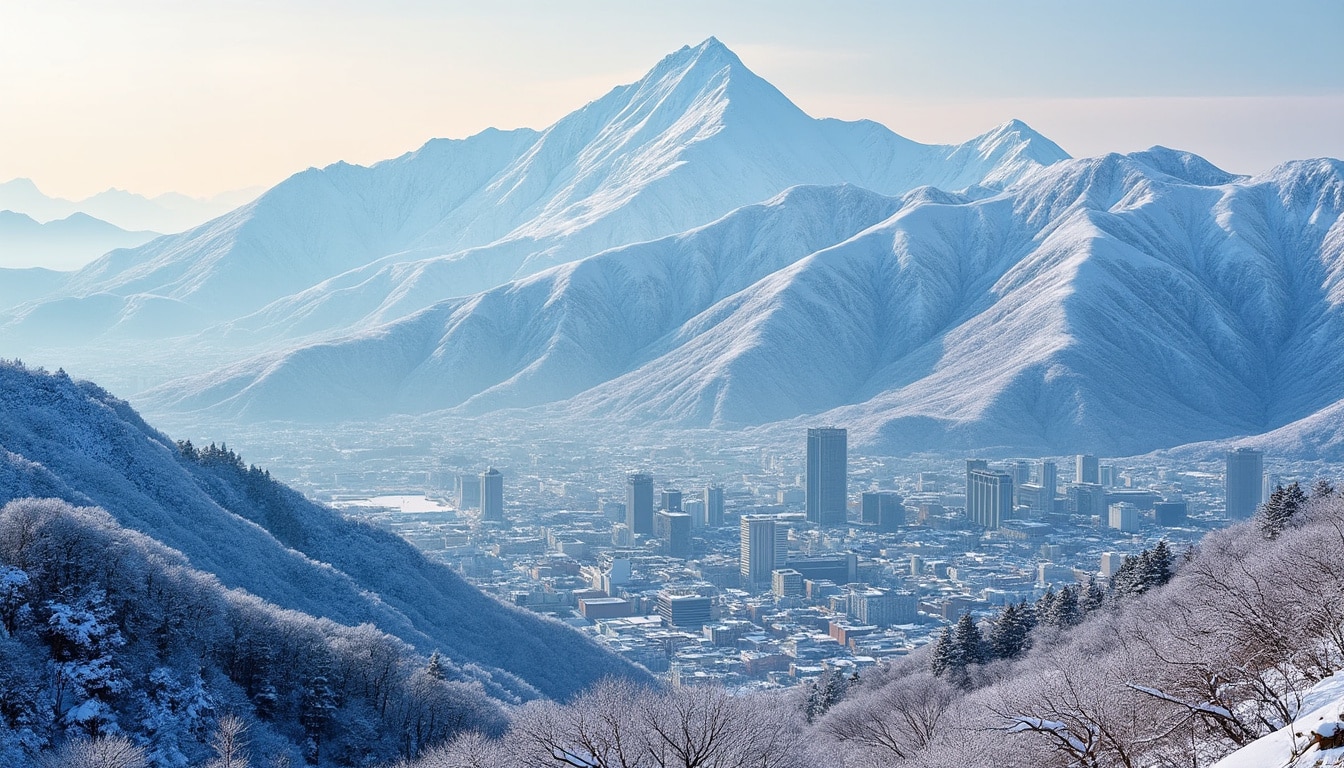
Interactive Factors: Humidity and Urban Heat Phenomenon
Interestingly, although the urban heat island effect typically raises temperatures in densely populated areas due to human activity and infrastructure, Seoul’s unique geography counterbalances this phenomenon. Usually, cities average warmer environs compared to their rural counterparts, but Seoul’s elevated nature and confined topography hinder the full expression of this effect. The intense winters thus maintain their grasp on the city’s landscape, unabated by urban warmth.
The city’s high humidity levels further exaggerate the sensation of cold, creating an environment where perceived temperatures are often lower than actual air temperatures. This high moisture content has a chilling effect, as moisture-filled air is less capable of retaining warmth. Consequently, residents and visitors often experience a biting cold that feels harsher than the thermometer suggests.
These combined geographical and climatic elements paint Seoul as a city where intricate natural forces accompany the beauty of a snow-covered urban landscape. Such dynamic conditions not only define the daily experience but also propel cultural responses and city-wide adaptations that embrace and endure the cold.
Understanding Atmospheric Factors and Their Impact
While geographical features and urban phenomena play significant roles in Seoul’s winter dynamics, the city’s atmospheric conditions are equally pivotal. Three major atmospheric factors that contribute to the harsh cold of Seoul include low solar radiation, cold air masses, and wind speeds.
🎆 Low Solar Radiation: As Seoul is situated at a northerly latitude, the winter months bring shorter days and less solar warming. The result is significantly reduced solar radiation, making it hard for the city to warm naturally. The sun’s low angle in the sky during this season minimizes the energy absorbed by the ground, causing more extended periods of cold weather.
🌬️ Cold Air Masses: The infamous Siberian High, a massive cold air mass, regularly travels from north to south, bringing intense cold snaps to the Korean peninsula, enveloping Seoul in its icy grip. The varying temperature differences between this frigid mass and the relatively warmer Pacific air can trigger heavy snowfall, adding to the winter spectacle.
🌪️ Wind Patterns: Despite the enveloping cold, wind speeds in the region are typically low, leading to stagnant air conditions. When winds do pick up, they can deliver a chilling effect known as wind chill, where exposed skin perceives colder temperatures due to the wind’s gusts. Conversely, on calm days, the cold air lingers longer, intensifying the prolonged chill.
| Factor | Impact on Weather | Key Characteristics |
|---|---|---|
| Low Solar Radiation | Reduced warming | Short, cold days |
| Cold Air Masses | Sudden temperature drops | Heavy snowfall potential |
| Wind Patterns | Cold air stagnation | Occasional wind chill |
Understanding these atmospheric conditions is essential for residents and tourists alike as they navigate the winter months, planning both leisure activities and daily routines around these ever-changing weather patterns. Moreover, such knowledge enriches the appreciation of Seoul’s winter as more than just a seasonal inconvenience, but a dynamic interaction of environmental forces that shape the city’s unique identity.
Strategies for Coping with the Cold
Adapting to such severe weather involves a variety of personal and community strategies. From investing in high-performance outerwear brands like Canada Goose, North Face, and Patagonia, to installing robust heating systems, preparation is key. Clothing layered with brands such as Columbia, Marmot, and Arc’teryx ensure warmth, while international brands like Uniqlo, Adidas, and Under Armour offer apparel adaptable to the fluctuating indoor-outdoor temperature exchanges.
Moreover, the scarceness of natural warmth necessitates effective urban solutions. The South Korean government has implemented improved insulation standards and renewable energy alternatives to counteract the energy drain during such extreme temperatures. These efforts are visible in reduced reliance on fossil fuels, a move toward sustainability, and better adaptation to the changing climate.
Understanding how atmospheric factors influence daily life in Seoul highlights both the resilience and adaptability of its citizens, guided by nature’s cues and the necessities imposed by modern urban living.
The Cultural Response to Winter in Seoul
Seoul’s winter is not just a test of endurance, but also a cultural celebration. The cold season brings with it a tapestry of traditions, adaptations, and festivities that transform the city into a cold-weather haven. Winter isn’t merely endured—it is embraced with a warmth that defies the chill.
🌟 Culinary Traditions: The cold prompts culinary innovations that delight the palate while providing warmth. Traditional Korean dishes like hotpot stews (jjigae), spicy kimchi soups, and nourishing porridges (juk) are staples during the winter months. These meals not only offer comfort but are also believed to bolster immunity against the biting cold.
🎆 Festivals and Events: Seoul hosts a variety of festivals that celebrate both the winter’s stark beauty and its cultural significance. Events like the Seoul Lantern Festival illuminate the cityscape with vibrant displays that draw both locals and tourists. Skiing, snowboarding, and ice fishing events capitalize on the snow, merging leisure with the inherent joy of winter.
Cultural Adaptation and Community Spirit
The accommodation of severe cold is also evident in communal practices. Koreans traditionally prefer cooler indoor environments, a custom that balances energy use and comfort. This lifestyle choice is seamlessly integrated with the country’s renowned ondol (floor heating) system, which ensures homes remain invitingly warm.
The spirit of shared experience is palpable as neighborhoods come together in community events, outdoor feasts, and collective celebrations that highlight warmth in unexpected places. This cultural mindset fosters resilience, transforming challenges into opportunities for camaraderie and exploration, making the city an inviting, if chilly, winter destination.
Through these cultural lenses, Seoul’s winters are portrayed not as deterrents but as seasons full of life and spirit, inviting residents and visitors to partake in the timeless rituals and communal joys of the cold months.
Practical Tips for Navigating Seoul’s Winter
Tackling Seoul’s winter requires more than just understanding the weather patterns – it involves practical preparation and smart strategies to ensure comfort and safety. Here’s how residents and visitors can thrive even as temperatures drop:
- 🧥 Layering Clothes: Invest in quality outerwear and thermal layers from brands like Moncler, an essential strategy for retaining body heat.
- 🏠 Heating Solutions: Make efficient use of Seoul’s widespread ondol systems or portable heaters to maintain indoor warmth.
- 🚍 Transportation Caution: Expect and plan for potential delays in public transport due to icy conditions and snow removal efforts.
Adapting one’s lifestyle, whether through fashion choices or daily routine adjustments, is crucial. During severe cold spells, always keep emergency clothing such as gloves and thermal caps readily available. Staying hydrated is vital, as the cold often masks dehydration signals, a critical oversight many succumb to.
| Tip | Description | Brands/Instruments |
|---|---|---|
| Wear Layers | Each layer provides additional insulation. | Moncler, Uniqlo |
| Upgrade Heating | Ensure warm, comfortable indoor environments. | Ondol system, space heaters |
| Public Transport Planning | Plan for delays due to snow. | Subways, buses |
Seoul’s winter conditions, with proper planning and an adventurous spirit, can enrich rather than restrict. From the frosted tranquility of temple grounds blanketed in snow to the communal warmth resonating through its neighborhoods, experiencing Seoul in winter is a rich tapestry woven with cultural nuance, climatic intrigue, and practical innovation.
Resilience and Adaptation
Beyond the practical tips, visitors and residents must embrace a mindset of resilience and joy in facing winter head-on. As they adjust to wind chills and snowfall, the sub-zero temperatures become an invitation to discover Seoul anew—the frosted beauty at Gyeongbokgung Palace, or a serene stroll along the Han River trail. With each cold breeze, there lies potential for unforgettable experiences that only winter can reveal.
Adopting a positive outlook turns winter’s challenges into rewards, where each layer of clothing, each cozy cup shared among friends, adds to the collective sense of achievement in navigating one of the world’s most distinct winters.
Frequently Asked Questions on Seoul’s Winter
- Does Seoul experience heavy snowfalls? While not as frequent as mountainous regions, Seoul does experience several weeks of snow, primarily in January and February.
- Are there winter sports available near Seoul? Yes, numerous winter sports resorts around Seoul offer skiing, snowboarding, and ice climbing activities.
- What clothing is recommended for Seoul’s winter? Layered clothing, thermal garments, waterproof boots, and insulated outerwear from brands like North Face and Columbia are highly recommended.
- How does Seoul prepare for winter? Seoul invests in snow removal and heating infrastructure improvements annually, ensuring public safety and comfort.
- Is public transportation reliable during winter? Generally reliable, but delays are common during heavy snowfalls due to road conditions.
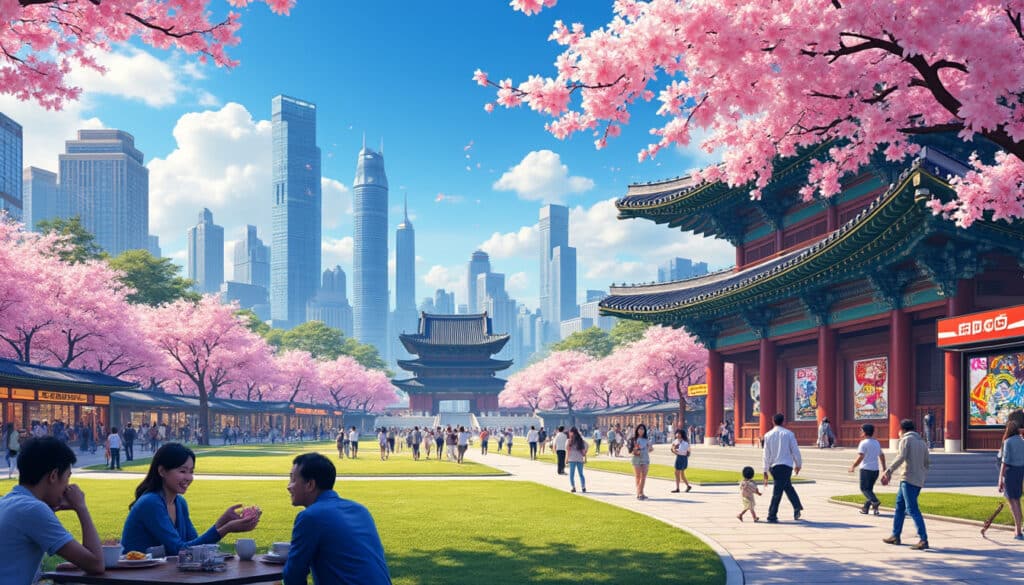
Seoul, the bustling heart of South Korea, boasts a climate as vibrant and varied as its cultural landscape. Visitors and residents alike are treated to four distinct seasons, each bringing its own flavor to the city. From the icy chills…
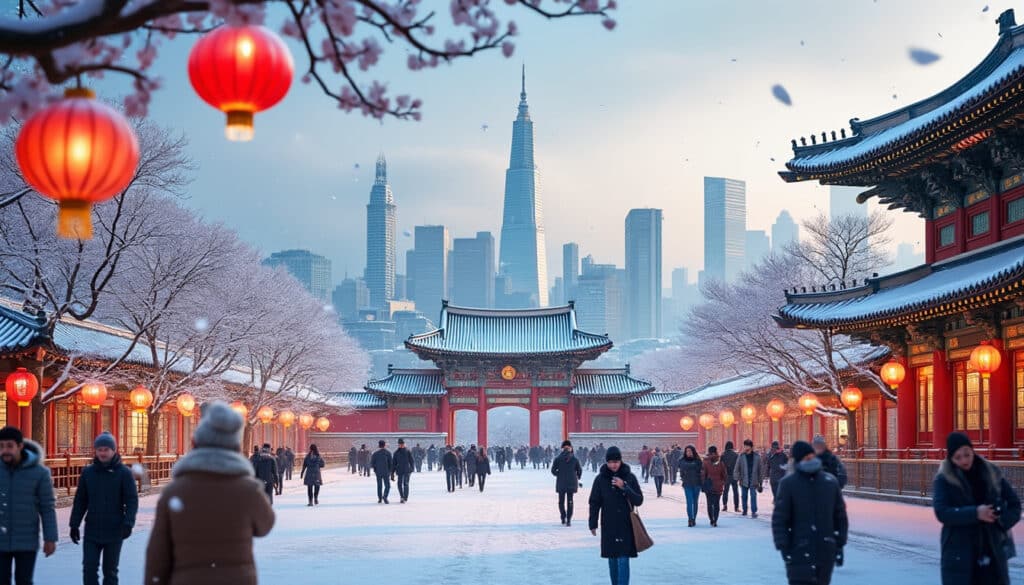
When imagining Seoul in winter, visions of snow-dusted palaces, serene parks, and bustling streets adorned in festive decorations might come to mind. But does it truly snow in Seoul? While South Korea’s capital city does experience winter weather, it doesn’t…
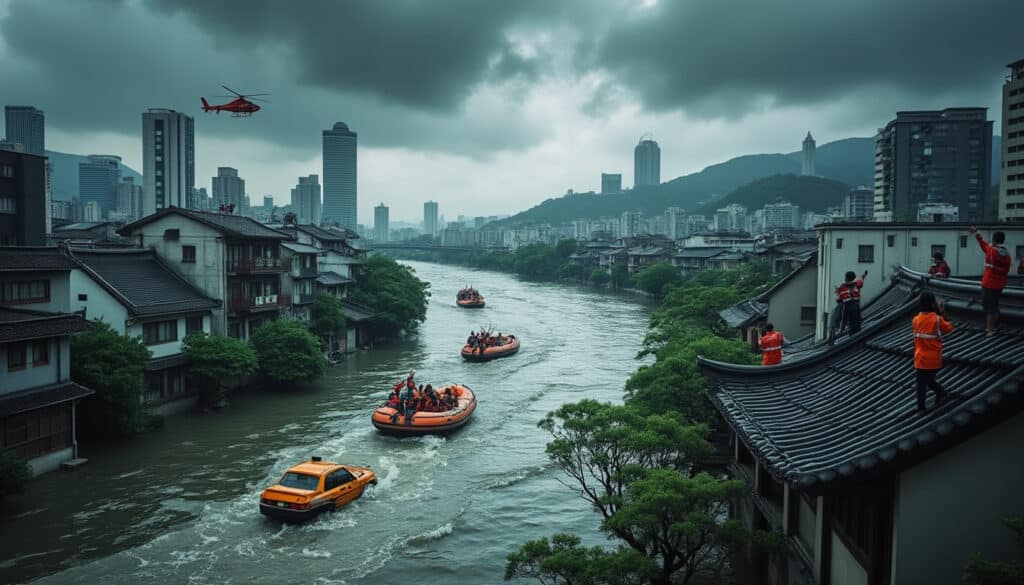
Flooding and natural risks in Seoul
Seoul, the bustling heart of Korea, is not without its challenges. As the city juggles rapid urbanization and meteoric technological advances, it also faces the formidable threats of flooding and other natural risks. Dubbed as one of the “Mega Cities”,…
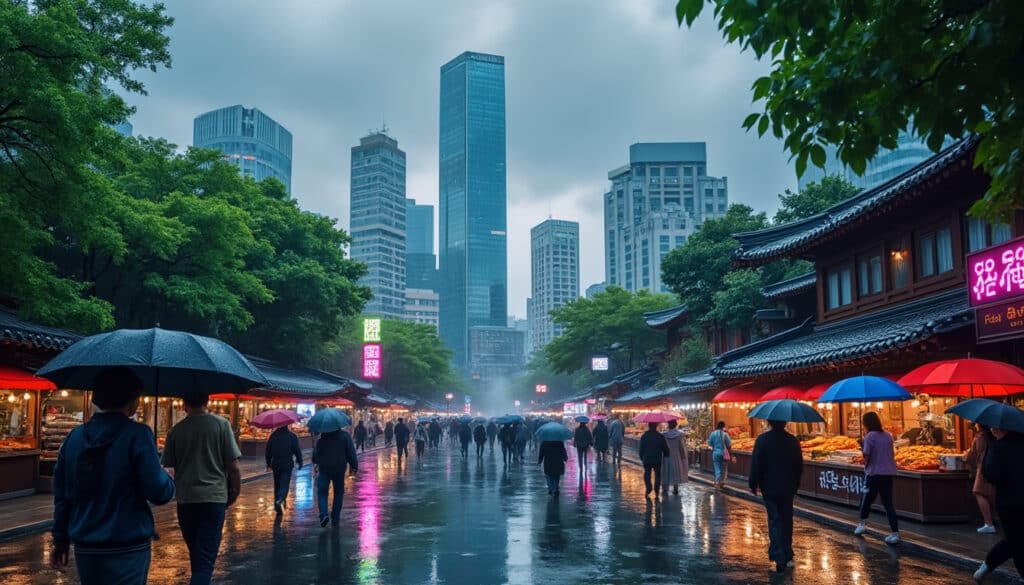
When one thinks of Seoul, the vibrant capital of South Korea, they might envision bustling streets, cutting-edge technology, and a rich blend of modern and traditional culture. However, nestled within these urban delights is a lesser-discussed yet crucial aspect: the…
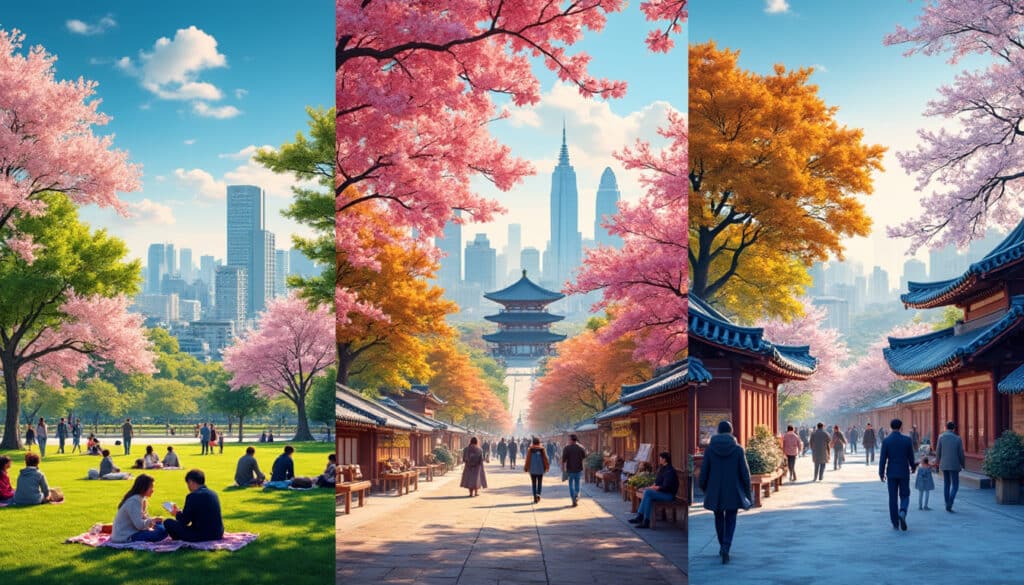
Is Seoul warm throughout the year?
Seoul, the dynamic capital of South Korea, is known for its rich culture and vibrant cityscape. Yet, it also presents a diverse climate that varies significantly across the year. Understanding Seoul’s weather patterns is essential for prospective travelers, businesses like…
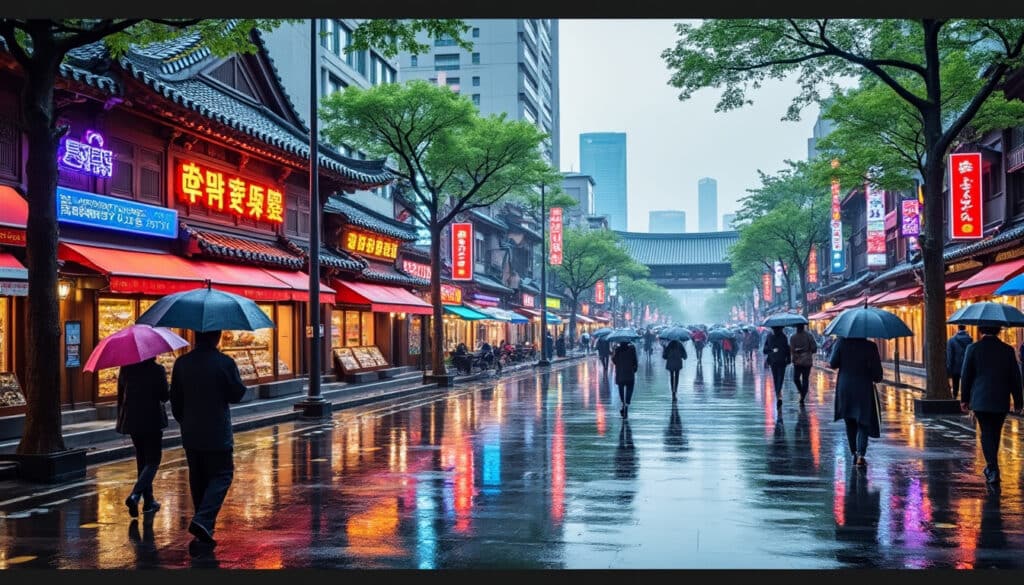
Rain and precipitation in Seoul
Seoul, the bustling heart of South Korea, is a city that experiences a wide array of weather patterns throughout the year. Its unique climate is characterized by hot, humid summers and cold, dry winters, influenced by its geographical location and…
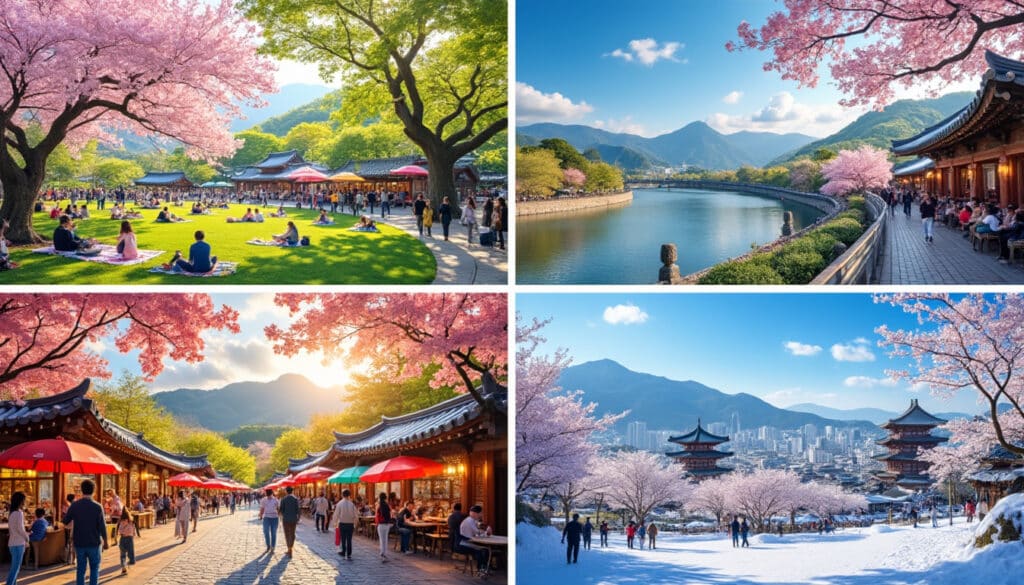
Seoul, the vibrant heart of South Korea, is a city that never sleeps. With its bustling streets and a culture that blends the traditional with the ultra-modern, it offers an experience for every kind of traveler. One of Seoul’s most…

Seoul, the vibrant capital of South Korea, presents a captivating blend of ancient traditions and bustling modernity. In this city where time seems to stand still and rush forward simultaneously, experiencing the beginning of a new day at sunrise is…
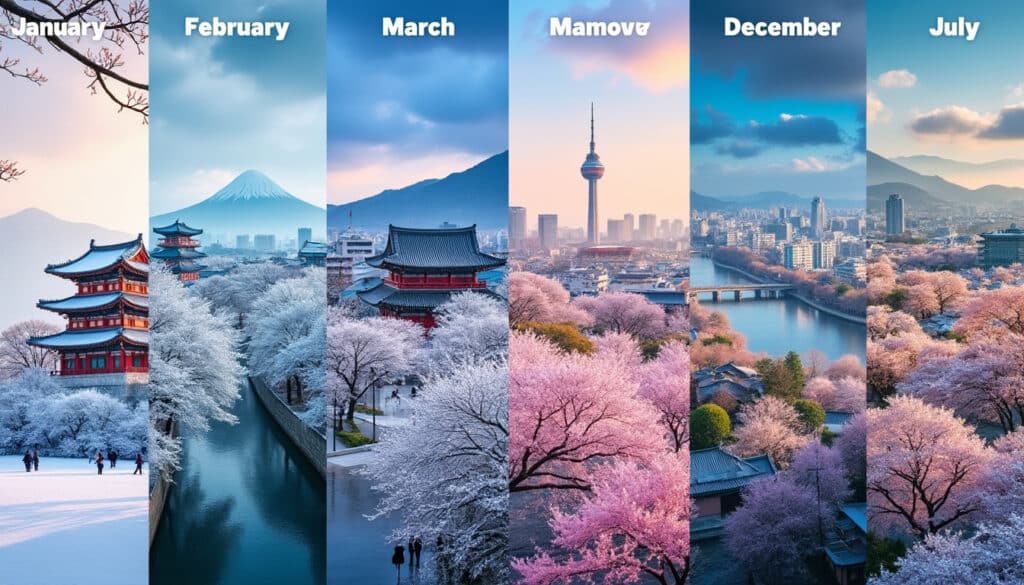
Seoul, the vibrant capital of South Korea, is a city known for its dynamic atmosphere, rich cultural heritage, and fascinating weather patterns that shift dramatically throughout the year. Understanding Seoul’s weather by month is essential for both tourists planning their…
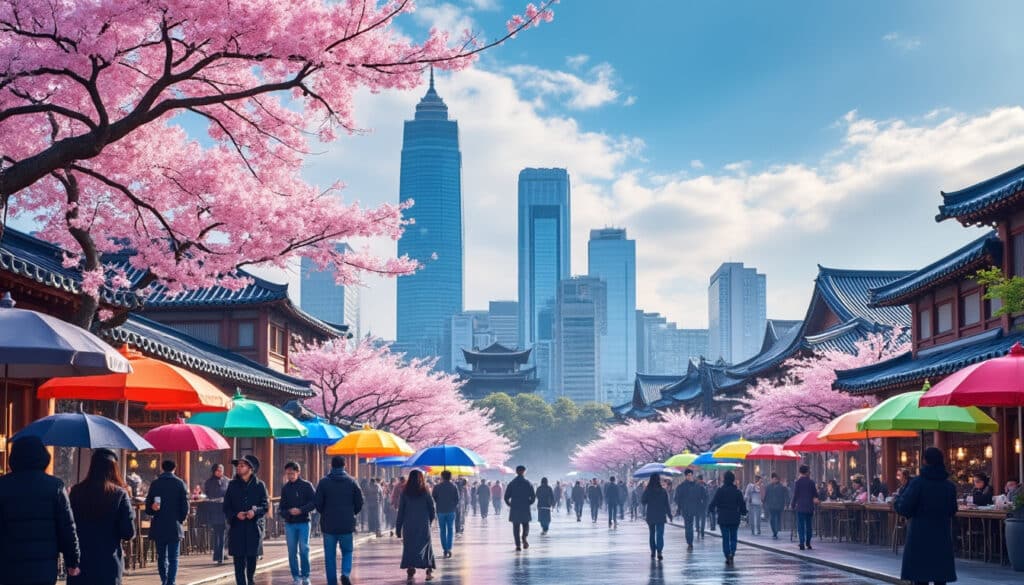
What is the weather like in Seoul?
Seoul, a bustling metropolis with a perfect blend of ancient traditions and modern innovations, often leaves its visitors and residents curious about its weather patterns. While the city is famous for its historic palaces, cutting-edge technology, and mouth-watering cuisine, understanding…

